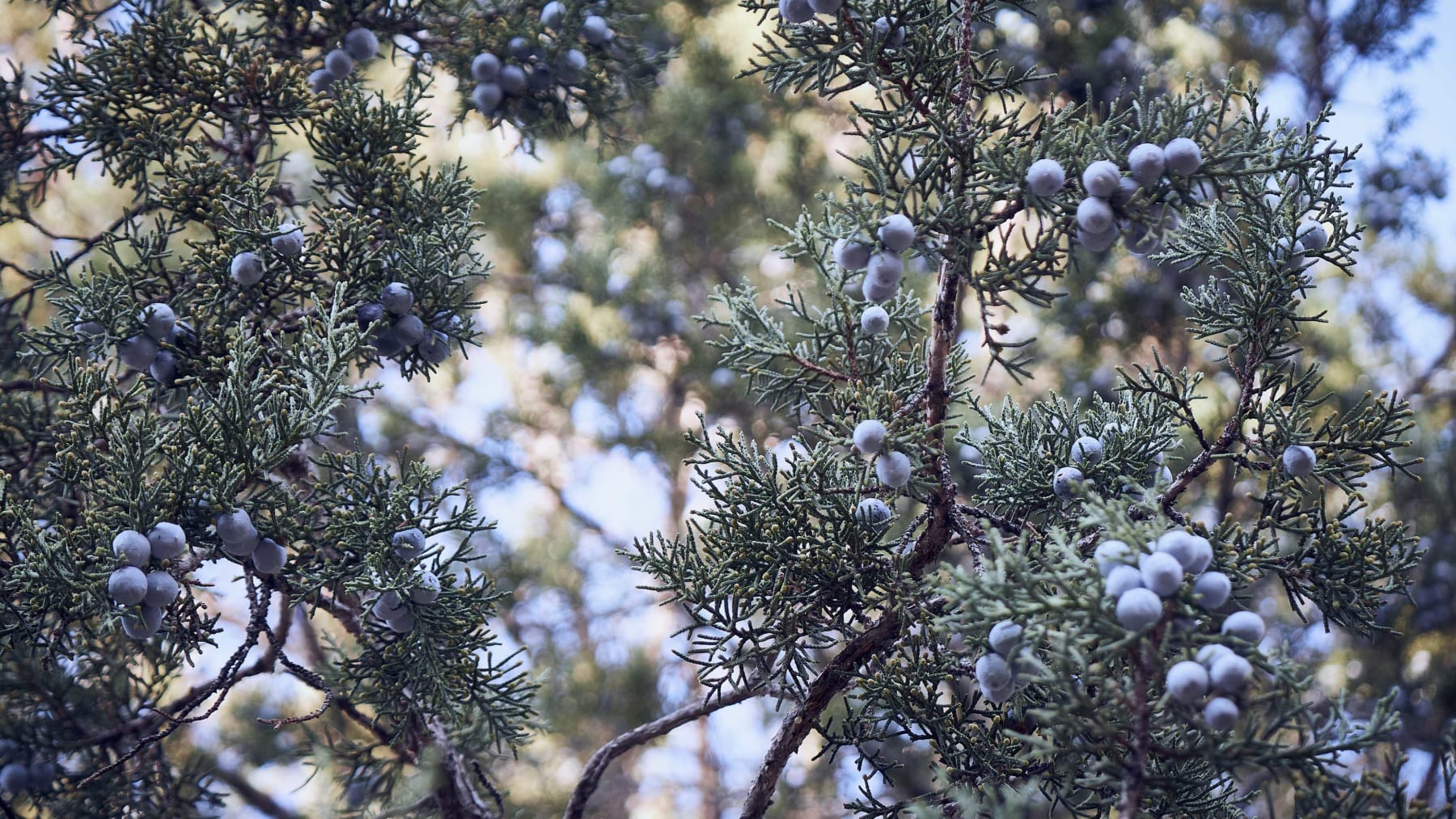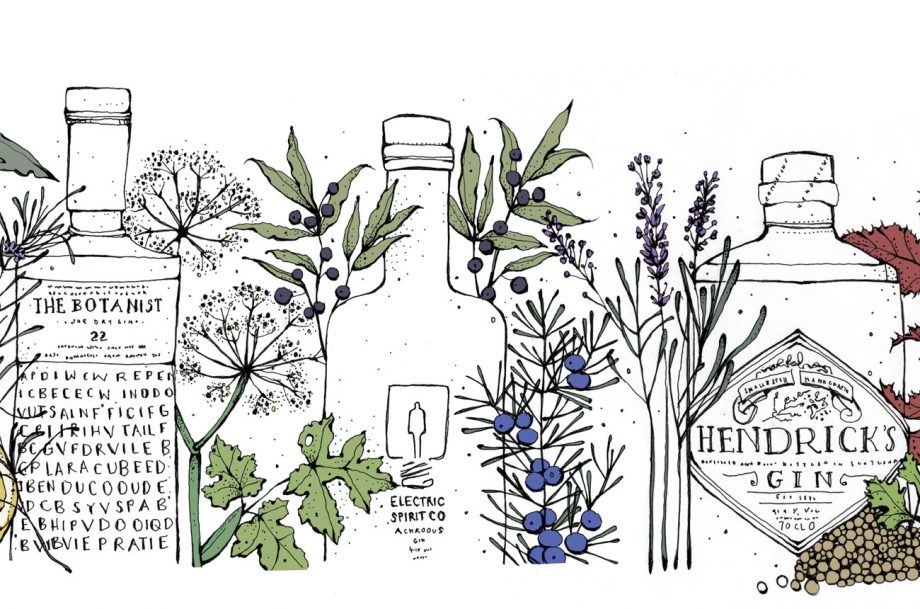Introduction To Gin Botanical Notes

Gin is a spirit that derives its unique flavor from a variety of botanicals. These botanicals are the ingredients used to infuse flavor into gin during the distillation process. They play a crucial role in defining the taste profile of gin, adding depth and complexity to the spirit. Botanical notes refer to the specific flavors and aromas that these ingredients impart to gin. From the aromatic and distinct juniper berries to the vibrant citrus zest and a range of herbal botanicals, each contributes to the overall flavor of gin, making it a truly captivating and diverse spirit.
Overview Of The Main Flavor Profile Of Gin
The main flavor profile of gin is defined by its botanical notes, which contribute to its unique taste. While the dominant flavor in gin is often described as juniper-forward, there are also other botanicals that play a role in shaping its flavor profile. These include citrus zest, herbal botanicals, spices, and roots. The combination of these botanicals creates a complex and diverse range of flavors in gin, making it an enticing spirit for cocktail enthusiasts and connoisseurs alike. Understanding the main botanical notes in gin can help in appreciating and identifying the distinct flavors in different gin varieties.
Explanation Of Botanical Notes And Their Role In Gin Production
Botanical notes are the various ingredients, such as herbs, fruits, spices, and roots, that are added during the production of gin. These botanicals play a crucial role in shaping the flavor profile of gin, giving it a unique taste that sets it apart from other spirits. Each botanical brings its own distinct flavors and aromas to the gin, contributing to its complexity and character. The combination and balance of botanicals create a harmonious blend that defines the essence of gin. Through careful selection and experimentation with different botanicals, distillers can craft gins with a wide range of flavors, allowing for endless possibilities and personalization.
Juniper Berries

Juniper berries are the star ingredient in gin production, giving gin its distinct flavor. These small, blue-purple berries have a unique taste profile characterized by notes of resin, pine, and a hint of citrus. They are responsible for the woody and spicy aromas that define the main flavor of gin. Juniper berries not only provide the base flavor for gin but also serve as a natural preservative during the distillation process. Their essential oils infuse the spirit, creating a harmonious blend of flavors that sets gin apart from other spirits.
Characteristics Of Juniper Berries In Gin
Juniper berries are small, blue-purple berries that are the cornerstone of gin production. They have a distinct flavor profile with notes of resin, pine, and a hint of citrus. These berries contribute a woody and spicy aroma that defines the main flavor of gin. Juniper berries not only provide the base flavor for gin but also act as a natural preservative during the distillation process. Their essential oils infuse the spirit, creating a harmonious blend of flavors that sets gin apart from other spirits. The unique characteristics of juniper berries make them essential in the creation of gin.
Role Of Juniper Berries In Defining The Signature Flavor Of Gin
Juniper berries play a vital role in defining the signature flavor of gin. With their distinct characteristics, they give gin its unique taste and aroma. Juniper berries contribute a woody and spicy flavor profile with notes of resin, pine, and a hint of citrus. This blend of flavors sets gin apart from other spirits and establishes its identity. In addition to providing the main flavor base, juniper berries also act as a natural preservative during the distillation process, enhancing the longevity and stability of the gin. The presence of juniper berries is essential for a liquor to be classified as gin, making them a key ingredient in its production.
Citrus Zest

Citrus zest plays a significant role in the flavor profile of gin. The zests of various citrus fruits, such as lemons, oranges, and grapefruits, are commonly used to add a bright and refreshing note to gin. The citrus oils found in the zest contribute acidity, tanginess, and a burst of citrus flavor to the spirit. Different citrus fruits bring their unique characteristics to gin, allowing for a range of flavors, from the zesty and vibrant to the sweet and aromatic. The use of citrus zest enhances the complexity and balance of gin, providing a delightful taste experience.
Influence Of Citrus Zest In Gin Flavors
Citrus zest plays a significant role in shaping the flavor profile of gin. The zests of various citrus fruits, including lemons, oranges, and grapefruits, contribute a bright and refreshing note to gin. The citrus oils found in the zest add acidity, tanginess, and a burst of citrus flavor to the spirit. Each citrus fruit brings its unique characteristics, allowing for a range of flavors, from zesty and vibrant to sweet and aromatic. The use of citrus zest enhances the complexity and balance of gin, providing a delightful taste experience.
How Different Citrus Fruits Contribute To The Overall Taste Of Gin
Different citrus fruits, such as lemons, oranges, and grapefruits, play a significant role in shaping the overall taste of gin. Each citrus fruit brings its unique characteristics to the spirit, adding brightness and freshness. Lemons provide a tangy and zesty flavor, while oranges contribute a sweet and aromatic note. Grapefruits, on the other hand, offer a slightly bitter and refreshing taste. The citrus oils found in their zest enhance the complexity and balance of gin, creating a delightful and vibrant taste experience. These citrus fruits are essential for achieving the desired taste profile in gin production.
Herbal Botanicals

Herbal botanicals play a crucial role in the flavor profile of gin. They bring a unique and refreshing quality to the spirit, adding depth and complexity. Some common herbal botanicals used in gin production include coriander, angelica root, and cardamom. These botanicals contribute earthy and aromatic notes to the overall taste of gin. For example, coriander adds a citrusy and spicy flavor, while angelica root imparts a floral and herbal taste. The combination of different herbal botanicals creates a harmonious blend of flavors, making gin a versatile and captivating spirit.
Variety Of Herbal Botanicals Used In Gin Production
Gin production incorporates a diverse range of herbal botanicals, each providing its own unique contribution to the flavor profile. Alongside juniper berries, common herbal botanicals include coriander, angelica root, and cardamom. Coriander adds a zesty and spicy element, while angelica root offers a floral and herbal note. Additionally, botanicals such as lavender, chamomile, orris root, and rosemary can be used to infuse gin with fragrant and aromatic characteristics. The combination of these herbal botanicals creates a harmonious blend of flavors that distinguishes gin from other spirits.
Examples Of Herbal Notes And Their Impact On Gin’s Taste Profile
Herbal botanicals play a significant role in shaping the taste profile of gin. Some examples of herbal notes commonly used in gin production include lavender, chamomile, orris root, and rosemary. Lavender adds a floral and delicate aroma, while chamomile brings a soothing and earthy flavor. Orris root contributes a subtle and powdery note, while rosemary adds an herbal and aromatic complexity. These herbal botanicals infuse the gin with unique flavors and aromas, creating a harmonious blend that enhances the overall taste experience. Their impact creates a diverse range of gin expressions, catering to different preferences and palates.
Spices And Roots

Spices and roots play an important role in the production of gin, adding depth and complexity to its flavor profile. Common spices used in gin production include coriander, cardamom, cinnamon, and nutmeg, which contribute warm and aromatic notes. Roots, such as angelica and orris root, provide earthy and bitter flavors that balance out the sweetness of other botanicals. These spices and roots work together to create a harmonious blend of flavors, enhancing the overall taste experience of gin. By incorporating spices and roots, distillers can create a unique and distinct gin expression that is full of warmth and character.
Use Of Spices And Roots In Gin Distillation
During the distillation process of gin, spices and roots are commonly used to enhance the flavor profile. Spices like coriander, cardamom, cinnamon, and nutmeg add warmth and aromatic notes to the gin. Roots such as angelica and orris root provide earthiness and bitterness, balancing out the sweetness of other botanicals. These spices and roots work together to create a harmonious blend of flavors, adding depth and complexity to the gin. Distillers carefully select and combine these ingredients to create their unique and distinct gin expressions, ensuring a rich and flavorful drinking experience.
Contribution Of Spices And Roots To The Complexity Of Gin Flavors
Spices and roots play a crucial role in creating the complex and layered flavors of gin. By adding spices such as coriander, cardamom, cinnamon, and nutmeg, distillers enhance the aromatic qualities and bring warmth to the spirit. These spices provide depth and richness to the overall flavor profile. Additionally, roots like angelica and orris root add earthiness and bitterness, balancing out the sweetness of other botanicals. The combination of spices and roots creates a harmonious blend of flavors, making each sip of gin a truly immersive and enjoyable experience.
Conclusion

In conclusion, gin is a versatile spirit with a complex flavor profile that is derived from a combination of botanicals. While juniper berries are the key ingredient that give gin its distinct taste, other botanicals such as citrus zest, herbal notes, and spices and roots also play a significant role in contributing to the overall flavor complexity. Understanding and appreciating the different botanical notes in gin can enhance the drinking experience and allow for a deeper appreciation of the spirit. Whether you prefer a more juniper-forward gin or one with a variety of botanical flavors, gin offers a wide range of options to suit different palates. So, the next time you enjoy a gin cocktail, take the time to savor and identify the unique botanical notes that make it so special.
Summarizing The Key Botanical Notes In Gin
Gin is known for its complex flavor profile, which is derived from a combination of botanicals. While juniper berries provide the base flavor, other key botanical notes include citrus zest, herbal elements, and spices and roots. These botanicals contribute to the overall taste and aroma of gin, creating a unique and diverse range of flavor profiles. Whether you prefer a more juniper-forward gin or one with a variety of botanical flavors, gin offers a wide array of options to suit different preferences. By understanding and appreciating these botanical notes, gin enthusiasts can enhance their drinking experience.
Tips For Identifying And Appreciating Botanical Flavors In Gin
- Start by smelling the gin: Take a moment to swirl the gin in a glass to release its aromas. Inhale deeply and try to identify any dominant scents, such as herbal, floral, citrus, or spicy notes.
- Pay attention to the taste profile: Take a small sip and let the gin coat your palate. Notice the different botanical flavors that come through, such as the juniper berries, citrus zest, herbal elements, and spices. Take note of any specific flavors that stand out to you.
- Experiment with different mixers and garnishes: Try mixing your gin with different tonic waters, sodas, or fruit juices to enhance or complement the botanical flavors. Additionally, experiment with garnishes such as citrus wedges, herbs, or spices to further elevate the aromatic profile.
- Explore different brands and styles: Each gin brand has its own unique combination of botanicals and distillation methods, resulting in distinct flavor profiles. Explore different brands and styles to expand your knowledge and appreciation for the botanical flavors found in gin.
- Attend tastings and cocktail events: Participating in gin tastings and cocktail events can provide a deeper understanding of the botanical flavors in gin. Guided tastings by experts can help you identify specific botanical notes and learn how they contribute to the overall flavor experience.
- Trust your palate: Ultimately, the best way to identify and appreciate botanical flavors in gin is to trust your own palate. Take the time to savor and enjoy the different flavors, and allow yourself to develop your own preferences and preferences for botanical notes.
FAQ About Identifying Botanical Notes In Gin
Q: What is the main flavor of gin?
A: The main flavor of gin comes from juniper berries, which give it its characteristic piney and resinous taste.
Q: What are botanical notes in gin?
A: Botanical notes in gin refer to the various herbs, spices, fruits, and other botanical ingredients used during the distillation process to add complexity and depth to the spirit.
Q: How can one identify botanical notes in gin?
A: To identify botanical notes in gin, one can engage in nosing and tasting sessions, paying attention to the aromas and flavors that each botanical imparts to the spirit.
Q: What are some common botanicals used in gin production?
A: Common botanicals used in gin production include coriander, angelica root, citrus peels, cardamom, cinnamon, orris root, and licorice, among others.
Q: Can the main flavor of gin vary based on the botanicals used?
A: Yes, the main flavor of gin can vary significantly based on the specific botanical blend used by the distiller, resulting in a wide range of flavor profiles in different gins.
Q: Are there different categories of gin based on botanical notes?
A: Yes, there are various categories of gin, such as London Dry Gin, Old Tom Gin, and New Western Dry Gin, each with its unique emphasis on specific botanical notes.

Family-owned and proudly serving the Black River Falls area since 1973. Our convenience store, bar, and restaurant within the same building are unique to the area. We accommodate our smokers with a separate facility. We are conveniently located within two miles of the interstate at the corners of Highway 12 and 27. We are your one-stop destination for a restaurant/bar and convenience store.